Herbs Part 3
Thyme
Thyme. What can I say about it other than we all don’t have enough of it! Haha, I feel like a bit of nerdy culinary humor today! Seriously though, thyme is necessary in many dishes. It is native from the Mediterranean region and was brought to the rest of Europe via the ancient Roman civilization. They also used it to cure shyness or depression and was a given to warriors before battle to boost bravery.
Other interesting ancient facts about thyme are that thyme gets it’s name from the Greek word thymon or thumos (meaning spritedness or another meaning is to fumigate) and the fragrant herb was originally used as incense or as a fumigator during animal sacrifices in ancient Greek culture. It was also a compliment to say someone smelled of fresh thyme. Greeks also used it to flavor honey (and it is still made today on Mount Hymettus in the ancient method!) and also used the herb to flavor wine and fruit. Ancient Egyptians used thyme oil in their embalming process and in ancient England you could drink a brew made in part of thyme to see fairies. In medieval-time Wales, thyme was planted on graves (to ensure safe travel to the next life) and patches of wild thyme were known for harboring fairies.
Health benefits of thyme are as ancient as the herb itself. Traditionally thyme was used to cure nightmares. It was later recommended in tea form to relieve headaches and hangovers by Carl Linneaus, the founder of the modern botanical nomenclature system and in 1719, a German apothecary found that thyme oil could be used as a natural fungicide. It has also been found that thyme has disinfecting properties and can combat the whooping cough in syrup form. It also can be inhaled to treat septic sore throats and topically treat psoriasis and eczema.
Thyme in culinary use is just as varied and rich with history. It can be bought fresh or dried and is known to be a strong and aromatic herb. Thyme is the best at retaining its flavor out of all the herbs when dried. It is used in Middle Eastern foods such as zatar (an herb and seed mix that is a staple in the cuisine). Thyme is also used in French cuisine, like the bouquet garni, a collection of herb tied with cooking twine or made into a sachet with cheesecloth that is traditionally 2 sprigs of thyme, 3 sprigs of parsley and 1 bay leaf dried or fresh.
There are many different species of thyme. Some are used for culinary uses and some are used for decoration only. The most common thyme is usually called English thyme, French thyme, summer thyme, winter thyme or common thyme. Other culinary thymes are lemon thyme, orange thyme, lime thyme and caraway thyme. Non-culinary thymes include mother of thyme, wild thyme, wooly thyme, and creeping thyme (which is an important nectar source for honeybees).
Today’s recipe will be the above mentioned zatar mix. I fell in love with it living in the Middle East and I get excited whenever I get to indulge in it. I usually had it heavily sprinkled over olive oil-brushed flat bread alone or with labne (a thick Middle Eastern salted yogurt spread, there is a photo of it at the bottom of the page!) slathered on top. It is a taste that is so unique and addicting, I am sure most of you out there will fall in love with it if you are not already! You may have to go to a Middle Eastern market for some of the herbs, but it will be worth it!
Zatar herb and seed mix
1/4c sumac
2Tbls dried thyme
1Tbls roasted white sesame seeds
2Tbls dried marjoram
2Tbls dried oregano
1tsp coarse salt
Grind sesame seeds in a food processor or with a motar and pestle. Add remaining ingredients and mix well. Store in an airtight container in a cool and dark place. You can use it for up to 6 months depending on how well you store it. If you want you can add some cumin or fennel seed or coriander to change it up a little. Some cultures add caraway seeds. You can spread it over oven-toasted flatbread (brush with olive oil first); sprinkle over salads, pizza or pasta dishes. Use your imagination and go crazy!
Enjoy!!
photos compliments of Getty images
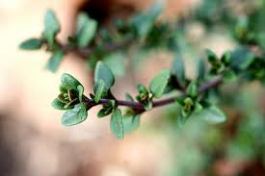

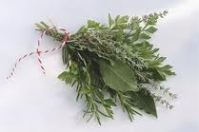
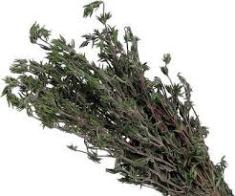

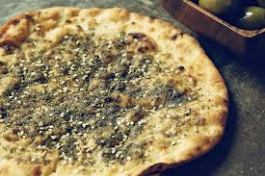
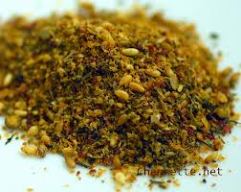

I cannot wait to try this recipe! Love it!